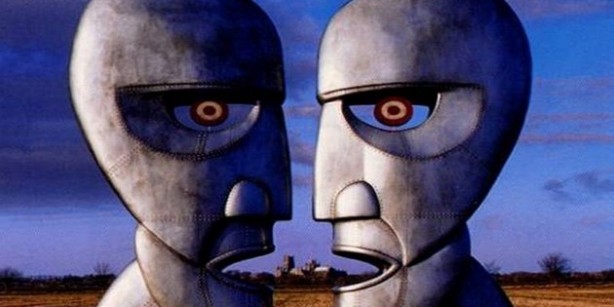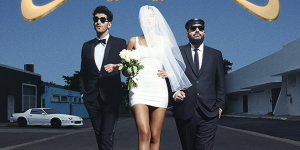 Music
Music
TRENDSPOTTING: The critical reclamation of Pink Floyd
by Richard Trapunski
October 6, 2011
Had Sigmund Freud lived into the 1970s, he may have expanded his theory of development to include a Pink Floyd phase. So surely do teenagers discover the seminal prog rock outfit, it’s practically an entrenched adolescent rite of passage. But just as quickly as he ascends from his basement, replaces his lava lamp and tosses his bong into the closet, Floyd is often relegated to relic status, a signpost of the earlier, more naïve, easily-mindblown self.
Pink Floyd is in the midst of a massive re-issue campaign that has already seen them reissue all fourteen of their original studio albums in a fleshed-out “Discovery” box set. Last week they re-released the stoner classic The Dark Side of the Moon as a two-disc “Experience” version and a six-disc “Immersion” version, which includes bonus DVD and Blue-Ray material and a tonne of memorabilia. On November 7, Wish You Were Here will get the same treatment, the next step on route to an entirely new set of classic albums, complete with digital upgrades and a bigger technological presence (including a whole suite of iPhone and iPad apps).
Make no mistake, the campaign reads like an elaborate cash grab at the hands of their label, EMI, a chance to resell the product to loyal Pink Floyd fans who will shell out for tricked-out versions of the albums they already own, not to mention the next wave of teenagers turning 17. But there may be a deeper strategy in play here. It seems like there’s a concerted effort not just to refuel Pink Floyd’s popularity, but also their critical reevaluation in “cool” circles. Pink Floyd has its eyes set on becoming hip, and maybe, just maybe, it’s working.
It’s important not to confuse “hip” here with “popular.” Pink Floyd has always been popular. The Dark Side of the Moon, for instance, has remained on the Billboard Charts for virtually all of its 38 year lifespan. But for many of the “cool” kids, it’s represented the ultimate symbol of AOR corporate rock dominance, a relic of an era they outgrew as soon as they discovered punk rock.
Legend has it that when Malcolm McLaren was putting together the Sex Pistols, he sought out Jonny Rotten not because of his playing skills, but because of his shirt: a Pink Floyd tee with the words “I Hate” scrawled overtop. It was practically an embodiment of the punk ethos he wanted to bottle and sell as the next wave of not only music, but culture.
The authenticity of the statement is doubtful, but it does represent a critical turning point for the band, one in which their intricately orchestrated, pristinely-produced, thematically bloated, pompous art rock (as represented by the post-Syd Barrett era) became the “establishment” that punk, and later indie rock, defined itself in opposition to. From then on, Pink Floyd has never been a particularly trendy influence for up-and-coming bands.
But just as surely as bands or artists can slip out of fashion, they can be revived. Take the recent re-emergence of Hall & Oates. Once viewed the perennially cheesy, mustachioed soft-rock punchline of the ’80s, they’ve since become the go-to reference for everyone from Lil Wayne to Chromeo (who even played a few festival shows with Darryl Hall himself). As the Yacht Rock comedy video series semi-ironically reignited interest in the smooth stylings of bands like Hall & Oats, the Doobie Brothers and Steely Dan, it slowly became okay to admit that under the cheese lay well-written songs and maybe certain hip artists had more of their DNA than they would once have been willing to admit.
It’s a pattern that seems poised to be repeated with Pink Floyd. In 2003, The Dark Side of the Moon was re-imagined by the Easy Star All-Stars as a trippy reggae suite called The Dub Side of the Moon. Then last year, the Flaming Lips (always up for a good gimmick) covered all of The Dark Side of the Moon, featuring guest vocals from none other than hardcore hero Henry Rollins.
The fortuitous timing of the re-issue campaign may or may not be a coincidence, but the orchestration of Late Night With Jimmy Fallon’s recent “Pink Floyd Week,” in which every musical guest covered a Pink Floyd song, definitely seemed poised to revive their buzz. Sprinkled among bands like Pearl Jam and Dierks Bentley were Pitchfork darlings like MGMT and The Shins; acts that play right into the hands of “indie nation”; acts that in earlier years may never have owned up to Pink Floyd’s influence.
And Pink Floyd’s druggy residue is all over the 21st century buzzbin (i.e. music blogs). With the rise of the so-called chillwave movement, suddenly the influence of acid and magic mushrooms is back in hip music, replacing cocaine and ecstasy as the “in” drugs. It’s an influence Pink Floyd helped usher in with their early psychedelic Syd Barett-led guise, and it’s one they held onto even throughout their limp ’90s records.
As Pink Floyd becomes palatable for 21st century hipsters, don’t be surprised to see your favourite band break into a cover of “Comfortably Numb” or “Time.”
Tags: Music, News, Chromeo, Henry Rollins, Lil Wayne, mgmt, Pink Floyd





